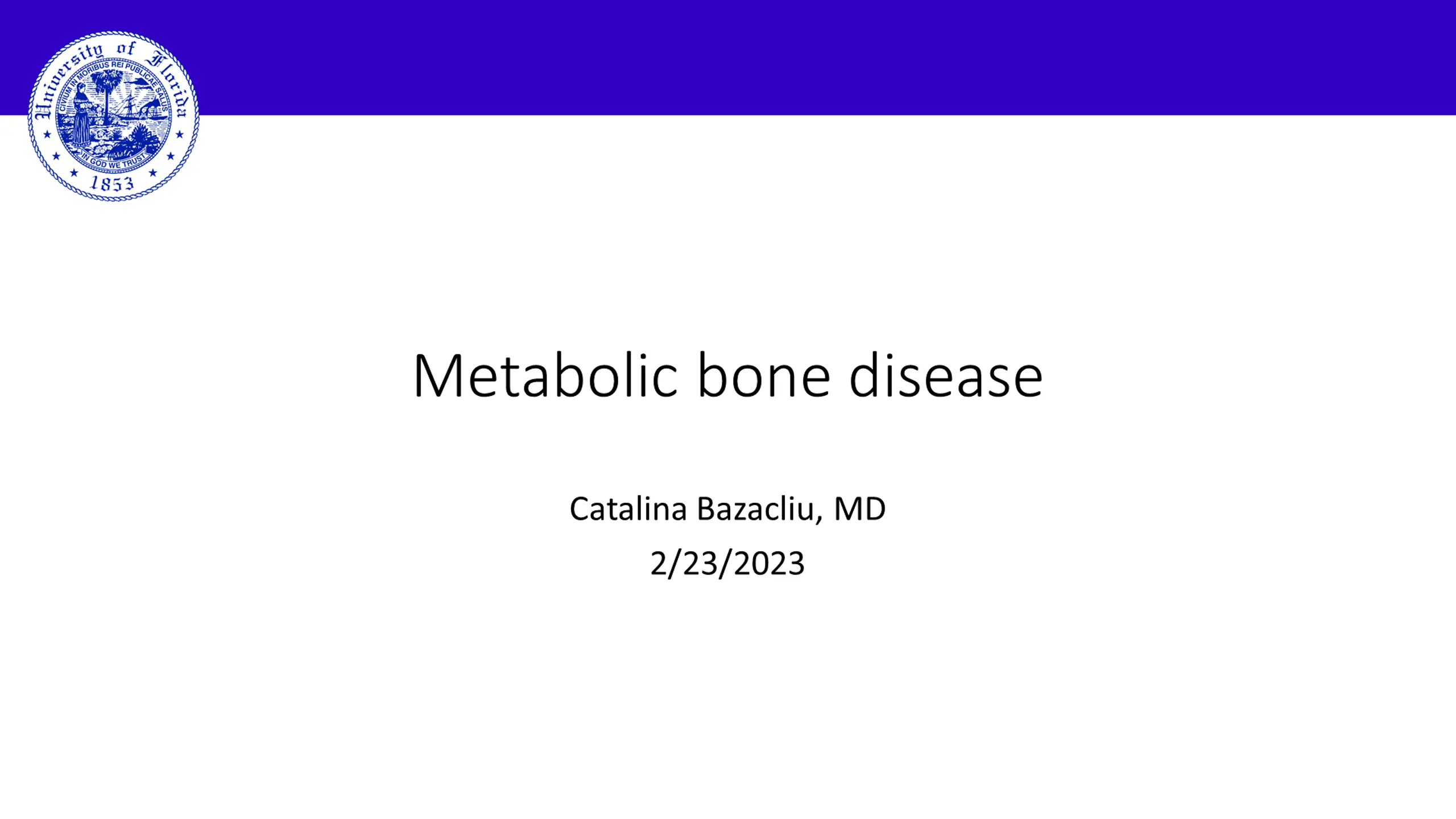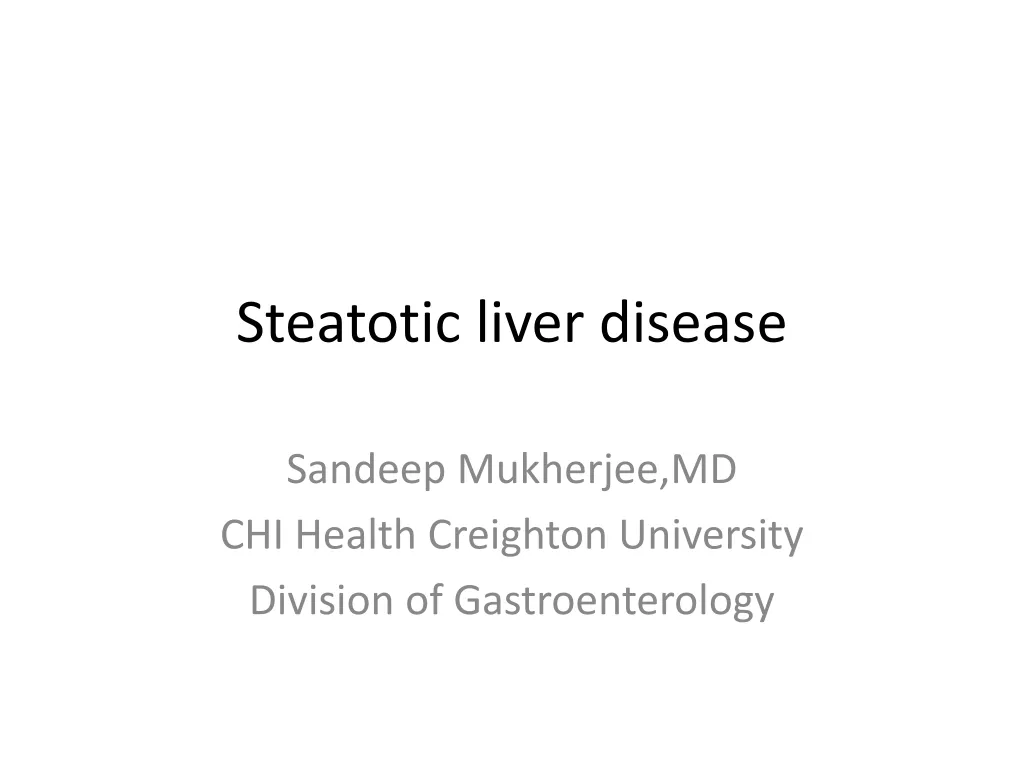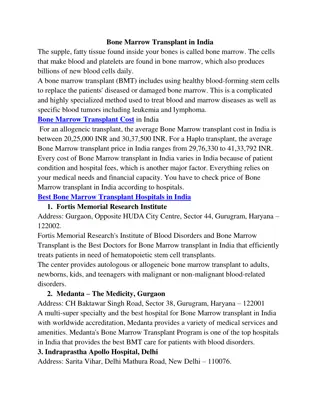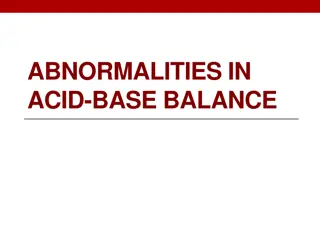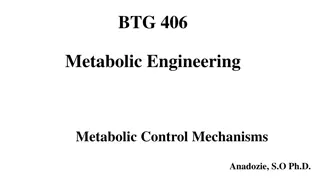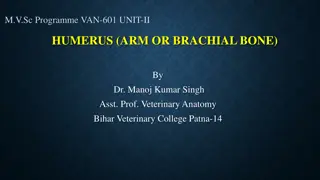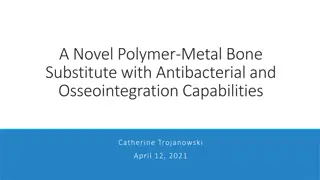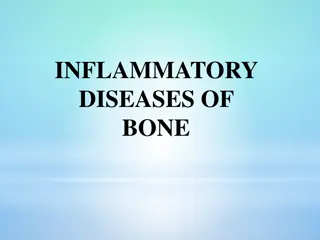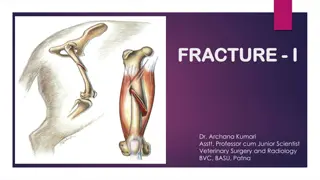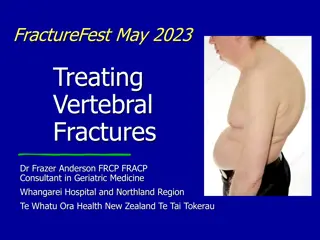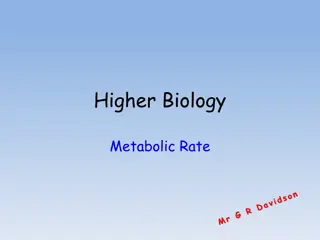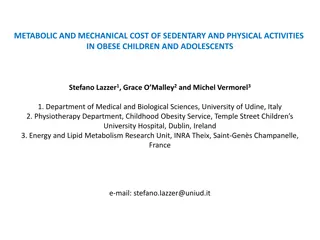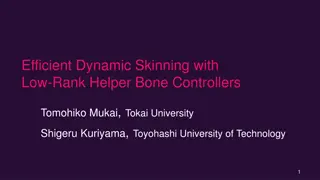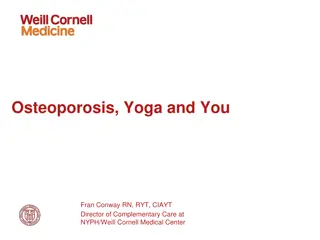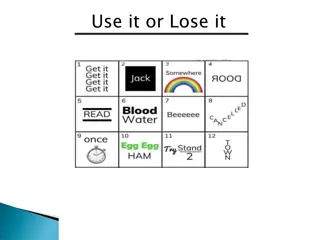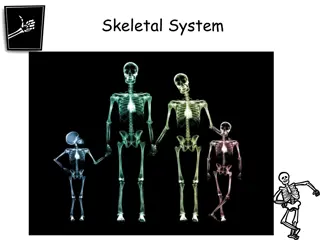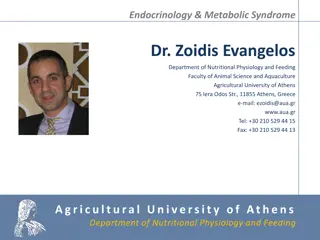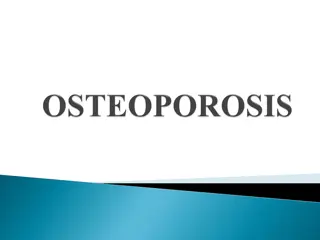Metabolic bone disease
Understand the metabolism of calcium and phosphorus, common disturbances, and nutrient requirements in preterm infants. Learn why metabolic bone disease is important and its long-term effects on bone health.
Download Presentation

Please find below an Image/Link to download the presentation.
The content on the website is provided AS IS for your information and personal use only. It may not be sold, licensed, or shared on other websites without obtaining consent from the author.If you encounter any issues during the download, it is possible that the publisher has removed the file from their server.
You are allowed to download the files provided on this website for personal or commercial use, subject to the condition that they are used lawfully. All files are the property of their respective owners.
The content on the website is provided AS IS for your information and personal use only. It may not be sold, licensed, or shared on other websites without obtaining consent from the author.
E N D
Presentation Transcript
Metabolic bone disease Catalina Bazacliu, MD 2/23/2023
Objectives 1. Explain calcium and phosphorus metabolism 2. Review the common early disturbances 3. Determine calcium and phosphorus requirements for in preterm infants receiving early aggressive nutrition
Why may it be important? Facts Osteoporosis affects ~ 30% of female and 12% male in the sixth decade of life (Melton, 1995) Worldwide, osteoporosis causes more than 8.9 million fractures annually (International Osteoporosis foundation) Does the poor bone mineralization early on impact bone health later in life? Slower growth (Lucas et al, 1989) and shorter stature (Bowden, 1999) Reduced bone mineral density at hip at 8 years (Bowden, 1999) Lower bone mineral content (BMC) of the lumbar spine and hip in adulthood (Baird et al, 2011; metanalysis) Significantly lower bone mineral density (BMD) as young adults, close to the age of peak bone mass, all suggesting an increased risk for osteoporosis in adulthood (Hovi et al, 2009) Catch up growth of BMC by 65-100 wks PCA (Horsman, 1989) Is the mineral intake important regardless of birth weight? the height and the change in height during the last decades were correlated with total nitrogen and phosphate intake and, as well as with the nitrogen to phosphate ratio (Pe uelas et al, 2017)
Calcium and Phosphorus are essential for cellular metabolism Calcium ( ~ 28g) Most abundant cation Distribution: 99% in bone Intracellular 1% Phosphorus (~16g) Most abundant intracellular anion Distribution: 80% in bone Intracellular (skeletal muscle 9%, nucleic acids, ATP, membrane phospholipids etc.) 0.03% in serum Action: energy storage and transfer, acid-base buffer system, enzymatic processes (phosphorylation) 0.1% in serum; <0.05% is metabolically active Action: second messenger in multiple processes e.g. neurotransmission, muscle contraction Ca:P molar ratio in apatite is 1.67, and in whole body is 1.3
Bone formation prerequisites Osteoid Mineral deposition Formation and resorption
Skeletal formation Begins in the 6thweek of gestation Develops in 3 distinct pathways 2 types of bone formation endochondral bone formation (cartilaginous skeletal structure) Cartilaginous frame established at 8 wks gestation Osteoblasts form primary ossification centers and secret osteoid Osteoclasts resorb chondrocytes replaced by osteoblasts intramembranous bone formation (osteoid bone matrix ) Organic bone matrix is formed Osteoblasts originate from neural crest cells- secret osteoid = organic bone matrix that bind Ca Become osteocytes with signaling and mechanoreceptor function to regulate osteoblast and osteoclast activity and bone mineral metabolism Osteoclasts from hematopoietic stem cells bone resorption
Pre- and postnatal mineral control Estrogen PTH Calcitonin PTHrP Vitamin D Ca Parenteral and enteral nutrition Ca P Placenta P Estrogen Vitamin D PTH Calcitonin Transient hypocalcemia Bone formation
Hormonal regulation of mineralization PTH (secreted in response to serum Ca) Bone: break down to release Ca by acting on osteoblasts, with subsequent osteoclast formation Kidney: increases Ca reabsorption in distal tubules and decreased phosphate reabsorption Upregulate 1-hydroxylase ( converts vit D to its active metabolite 1,25 dihydroxy-vitamin D calciferol) Vit D Increases intestinal Ca absorption PTH-related peptide Maintains transplacental Ca gradient; increases Ca transfer across the placenta, involved in chondrocyte development and endochondral bone formation Calcitonin (elevated in fetus bone production) Upregulates calcitriol production Decreases osteoclast activity Upregulated in response to increase in serum calcium Others: GH, IGF-1 (stimulates bone growth and mineralization), maternal estrogen (favors mineralization)
Fetus Neonate Ca, Mg, P are maintained higher than maternal values by 1.2-2 mg/dl, 0.12mg/dl, 1.5 md/dl 80% of Ca accretion in 3rd trimester Fetus take 100-120 mg/kg Ca and 50- 65 mg/kg of P Relative hypercalcemia maintained by low PTH low calcitriol (low PTH and high placental 24 hydroxylase which prevents activation of vit D) high PTH related peptide increased calcitonin intestinal intake is the main source of Ca after removal of placenta passive transport initially (concentration dependent) Active transport mediated by calbindins (important with maturation), Calbindins are vit D dependent Ca- binding receptors on enterocytes
Correction of hypocalcemia P absorption [P]
Calcium and Phosphorus disturbances in prematurity Hypocalcemia Serum calcium concentration of <7g/dl or iCa <0.9 mmol/L Historically affects 30-57% of infants, increased with decreasing GA Usually in the first 72h of life, it corrects by day 7-10 if untreated Hypercalcemia Seen more often as we started to provide Ca in the initial PN immediately after birth (Abrams et al., Clin Perinatol 2014)
Calcium and Phosphorus disturbances in prematurity Hypophosphatemia Serum phosphate < 4 mg/dl Secondary to P excretion or intracellular shift of P (refeeding syndrome, insulin treatment of DKA, severe respiratory alkalosis, sepsis) Hyperphosphatemia Serum phosphate >7 mg/dl Rare unless renal failure
What is metabolic bone disease (MBD)? No universal consensus in definition Reduction in bone mineral content relative to the expected level of mineralization for an infant of comparable size or gestation in combination with radiological and biochemical changes (Rustico et al, 2014) Reported incidence variable 30-55%, varying with birthweight, type of enteral feedings Mostly silent manifestation: poor extrauterine growth, increased ventilator dependency or deterioration of the pulmonary status, fractures
Risk factors prenatal Uteroplacental insufficiency Preeclampsia Fetal growth restriction HTN Diabetes mellitus Anemia Smoking Cocaine use Chorioamnionitis Maternal vit D deficiency Male sex postnatal Prematurity Feeding intolerance TPN (decreased intake) Vit D deficiency Lack of physical activity Diseases (sepsis, renal, liver, GI disease - NEC, SBS, BPD) Meds: methylxanthines, loop diuretics, steroids, sodium bicarb Chronic acidosis (bone acts like a buffer) Toxins (e.g. aluminum in PN) HM ( 5 times less mineral content than preterm formulas)
Diagnosis markers of mineralization An early marker would be useful, but there is no gold standard for dx of MBD, so it is difficult to establish validity of a biomarker Blood ALP >900U/L sensitivity 88% and specificity 71% correlated with DEXA (Backstrom et al, 2000) Calcium- no correlation Phosphate - low P, low BMD by DEXA (Backstrom et al, 2000,Koo et al., 1989) ALP and P combined (Backstrom et al, 2000), Sensitivity 100% specificity 70% Urine U calcium (Catache et al, 2003), but not Ca/creat, P, TrP U P excretion difficult to interpret due to low renal threshold for excretion U Ca >1.2 mmol/l and U P >0.4 mmol/L are associated with high bone mineralization Radiological X-ray good only in advanced demineralization (standard classification is available) DEXA normative data available (and single photon absorptiometry) QUS (no standard, but easy and risk free)
Diagnosis Serum Ca misleading Nadir 24-30h increase PTH kidney increase Ca and decreased P reabsorption in kidneys, Intestine increased absorption Ca, P via calcitriol synthesis Maintained by bone demineralization <8.5 mg/dl inadequate intake Phosphate < 3.6 in exclusively BF babies higher risk of MBD Tubular reabsorption of phosphate (TRP) = uP/sP x screatinine/ucreatinine (serum P < 5.5 and TRP> 95% insufficient P intake) Caveat: 23-25 weekers have a lower renal excretion threshold for P elevated U excretion even with low serum P
Diagnosis Alkaline phosphatase (ALP) (liver, bone mostly, intestine) Level peak at 4-6 weeks, then decrease at 8-10 weeks < 33 wks GA: ALP >900 & P<5.6 GA 70% sensitive and 100% specific for MBD < 30 wks GA: ALP> 500 MBD Vitamin D <20 ng/ml 2-hydroxy vit D deficiency, < 30 nn at risk PTH >100 pg/ml NN at risk
Radiology diagnosis Radiography Detect after 20-40% reduction of bone mineralization Grading 0-3: DEXA (dual-energy X-ray absorptiometry) gold standard Measures density in grams of hydroxyapatite/cm2 lumbar spine, forearm, calcaneus Quantitative ultrasonography Measure along tibia Preterm at 24-28 wks GA term have lower parameters at corrected term age
Screening and monitoring of MBD Level of interest Key points ALP >800 IU/L or >600 and trending up High values associated with MBD Can be elevated in liver disease and may consider bone specific ALP if etiology unclear Calcium (albumin corrected) <8.5 or > 10.5 Often normal (compensation). High levels indicate over-treatment. Low values suggest low intake or increased losses Phosphorus <5.5 mg/dl (1.8 mmol/l) Low levels correlate with MBD TRP 1-(Uphos/Sphos Scr/UCr) >95% in setting of lower phosphorus (phos < 5.5) Should be obtained at the same time as the serum sample. High TRP suggests low urinary phosphate wasting (low serum phos, or low PTH). Low TRP suggests increased urinary phosphatase wasting (often from high PTH in this population) Urine Ca:Cr (spot) 3.8 mmol/mmol (95%tile) (1.3 mg/mg) Screen for hypercalciuria due to excess calcium/calcitriol intake or side effect of meds (ex. Loop diuretic, methylxanthine) PTH >100 pg/ml No reference range for preterm infants (adult:50 to 88 pg/ml) Elevated in subclinical hypocalcemia 25(OH) Vitamin D <30 ng/ml Values < 20 ng/ml indicate deficiency Adapted from Rustico et al, 2014
Monitoring -No clear recommendations Identify at risk babies urine Ca and P weekly <3wks; biweekly after with serum Ca, P (Land et al.) routine eval starting at 4 weeks of age ( min ALP and P, can add CA and vitD) then q2 weeks d/c monitoring if Low risk Receiving full enteral feeds ALP <500-600 IU/L & P>4 mg/dl ALP > 800 or clinical concerns for fx- radiologic monitoring of changes is indicated
Management Optimize Ca, P , vit D AAP 2013 Enteral 150-200 mg/kg/day Ca, 70-140 P and 200-400 U vitD Parenteral 75-100 Ca, 50-80 P with ratio 1.7:1 (mg/mg) Health term infant Ca absorption is ~ 50-60% and P is 80-90% Unfortified milk contains 25 mg/dl Ca Fortified human milk/preterm formula If MBD not improving further supplementation can be given (elemental Ca and P): Ca starting at 20 mg/kg/day up to 70-80, P starting at 10-20 up to 40-50 mg/kg/day Minimize meds that promote demineralization osteolytic medications Passive ROM Active monitoring for MBD
Management Approach for Enterally Fed Preterm Infants With Radiologic Evidence of Rickets 1. Maximize nutrient intake. Consider increasing human milk fortifier and/or feeding volume of preterm formula, as clinically indicated. If unable to tolerate human milk fortifier or preterm formula, then will likely need elemental minerals added as described below. 2. If no further increases in these can be made, add elemental calcium and phosphorus as tolerated. Usually beginning at 20 mg/kg per day of elemental calcium and 10 20 mg/kg per day elemental phosphorus and increasing, as tolerated, usually to a maximum of 70 80 mg/kg per day of elemental calcium and 40 50 mg/kg per day elemental phosphorus. 3. Evaluate cholestasis and vitamin D status. May consider measuring 25-OH-D concentration, targeting serum 25-OH-D concentration of >20 ng/mL (50 nmol/L). 4. Follow serum phosphorus concentration and serum APA weekly or biweekly. 5. Recheck radiographs for evidence of rickets at 5- to 6-week intervals until resolved. 6. Advise caregiving team to be cautious in handling of infant. 7. Limit use of steroids and furosemide, as clinically feasible. Abrams 2013
Hypophosphatemia: unexpected or predictable effect of the recent changes in early nutrition of preterm infants?
Refeeding-like syndrome and premature infants In the past preterm infants used to develop a catabolic state, due to restricted nutrition in the first few days of life, characterized by hypocalcemia, hypoglycemia, hyperphosphatemia and non-oliguric hyperkalemia A re-feeding like syndrome was described in 2012 by Mizumoto in an SGA preterm infant on PN presenting with hypokalemia, hypophosphatemia and hypercalcemia (Mizumoto H, et al. Pediatr Int 2012) Parenteral nutrition, in the first 7 days of life for the treatment of SGA ELBW infants, was correlated with hypophosphatemia and hypercalcemia (Ichikawa et al., Pediatr Endocr Met 2012) Higher IV aminoacid (AA) administration was correlated with hypophosphatemia on day 8, with lower P concentration in SGA compared to AGA ELBW infants.
Early hypophosphatemia in preterm growth restricted infants receiving aggressive parenteral nutrition Hypophosphatemia was associated with the presence of maternal preeclampsia in all VLBW infants and IUGR infants were significantly more likely to have severe hypophosphatemia in the first postnatal week (Ross et al., J Perinatol 2013) Extremely preterm SGA infants managed with early parenteral nutrition had a high risk of early hypokalemia and hypophosphatemia (Boubred et al., Acta Paediatrica, 2014)
Hypokalemia and hypophosphatemia are more frequent in SGA infants (A) Mean blood potassium (K) concentrations in the AGA group (open circles) and SGA group (filled circles) from birth (Day 0 to 4) (E) Percentage of infants with severe hypophosphatemia ( 0.9 mmol/L) in the AGA (open bar) and SGA (filled bar) groups during the study period. Boubred et al., 2015
Refeeding-like syndrome and premature infants Early hypophosphatemia in preterm infants receiving aggressive parenteral nutrition was proposed to be part of a syndrome caused by suboptimal provision of nutrients due to placental feeding disruption, with postnatal adequate intake of aminoacids and energy that are not accompanied by the one of other nutrients (Placental Incompletely-Re(stored)Feeding syndrome) (Bonsante et al., PLOS 2013)
Hypothesis for the mechanism of the Placental Incompletely Restored Feeding syndrome of the preterm infant (PI-ReFeeding syndrome). Hypothesis for the mechanism of the Placental Interrupted Feeding syndrome of the preterm infant (PI- Feeding syndrome). Bonsante et al., PLOS 2013
Effect of early amino acid intake on calcium-phosphorus homeostasis Plasma concentrations of calcium and phosphate in the 3 groups with different amino acid intake. LAA group: <1.5 g/kg/day of mean AA intake; MAA group: 1.5-2 g/kg/d of mean AA intake; HAA group: >2 g/kg/day of mean AA intake. Bonsante et al., PLOS 2013
Urine Ca excretion increases with increase in AA intake Calcium urine output in the 3 groups with different amino acid intake. LAA group: <1.5 g/kg/day of mean AA intake; MAA group: 1.5-2 g/kg/d of mean AA intake; HAA group: >2 g/kg/day of mean AA intake Bonsante et al., PLOS 2013
Serum P and Ca are related to the cumulative P deficit Linear regression function showing the relationship between the cumulative deficit of phosphorus intake and the plasma concentrations of calcium and phosphate. Bonsante et al., PLOS 2013
P needs/deficit function of AA intake P need (mg/kg/d)= Ca intake (mg/kg/d)/2.15 + (AA intake(g/kg/d) -1.3) * 0.8 * 12.3 Bonsante et al., PLOS 2013
Early hypophosphatemia in preterm infants receiving aggressive parenteral nutrition VLBW infants receiving enhanced feeding protocol (3.5 g/kg/d AA vs 2 g/kg/d AA) demonstrated improved postnatal growth, but displayed significant electrolyte disturbances during the first week of life with hypophosphatemia, hypokalemia and hypercalcemia (Moltu et al., Clin Nutr 2013) Of note a higher occurrence of septicemia in the intervention group, (63% vs. 29%) lead to study closure Hypophosphatemia was present in 91% of infants with mean P 2.52mg/dl in infants receiving early aggressive PN (3-3.5g/kg/day AA) (Brener Dik et al, J Perinatol 2015) Smaller infant with lower P presented with sepsis more frequently and received more vasoactive drugs and mechanical ventilation. Hypophosphatemia was common, and could be severe, in the first week of life in premature infants <1,000 grams, and growth restricted newborn and was associated with lower enteral nutrition and higher parenteral amino acid intake in the early days of life (Bustos et al., An Pediatr 2018)
Early hypophosphatemia in preterm infants receiving aggressive parenteral nutrition The low protein content of the PN improved plasma phosphate and calcium levels, but increasing the levels of both phosphate and amino acids did not influence weight gain during the first month of life (Moe et al., Acta Paediatrica 2015) A Ca:P ratio of 1:1 was associated with a lower incidence and severity of hypophosphatemia and hypercalcemia in preterm infants given higher concentrations of amino acids ( 2.5 g/kg/day) from postnatal day 1 (Mulla et al., Arch Dis Child Fetal Neonatal 2017) Increasing early protein and energy intakes in VLBW infants in the first week of life increases the electrolyte requirements and a change in Ca:P ratio could avoid the development of a refeeding-like syndrome (Senterre et al., JPGN 2015)
Ca and P accretion 80% of bone mineralization takes place during the last trimester Calcium estimated accretion rate is 100-120 mg/kg/day (max ~36 wks) Phosphate estimated accretion rate is 60 -75 mg/kg/day 0.3 mmol P (~10g) are necessary for 1 g protein accretion P is prioritized for tissue accretion vs. bone formation mEq mmol mg Calcium 1 0.5 20 Phosphorus 1 0.33 10.3
Consequences of hypophosphatemia Inhibits glyceraldehyde-3-phosphate dehydrogenase (role in glycolysis) Decreased 2,3 diphosphoglycerate levels with left displacement of Hg dissociation curve resulting in decreased O2 uptake and transport Clinical complications muscle weakness delayed weaning from respiratory support glucose intolerance increased infection hypercalcemia, hypercalciuria, and if prolonged bone demineralization, osteopenia, and nephrocalcinosis (especially in VLBW and SGA infants)
Enteral and parenteral recommendations TABLE 1. Recommended intake of calcium and phosphorus for preterm infants AAP 85 ASCN 88 ESPGHAN 87 LSRO 02 Tsang 05 ESPGHAN 05 ESPGHAN 10 Parenteral Ca, mmol/kg/day P, mmol/kg/day Ca:P (molar) Enteral Ca, mmol/kg/day P, mmol/kg/day Ca: P (molar) 1.5 2.25 1.6 2.25 1:1 1.5 2.0 1.5 2.0 1.1:1 1.3:1 1.3:1 1.7:1 1.0 4.0 0.75 3.0 4.5 5.25 4.1 4.6 1.1:1 1.3:1 1.75 3.5 1.6 3.0 1.4:1 2.0:1 3.7 5.5 3.3 4.4 1.7:1 2.0:1 1.4:1 1.6 3.0 5.0 2.0 3.5 3.0 3.5 2.0 3.0 1.5 2.0 Christmann et al., JPGN 2014 (modified)
Enteral and parenteral recommendations ESPGHAN Recommendations for calcium and phosphorus 2018 Age Ca mmol (mg)/kg/d P mmol (mg)/kg/d Preterm infants during the first days of life 0.8-2.0 (32-80) 1.0-2.0 (31-62) Growing Premature Infants 1.6-3.5 (100-140) 1.6-3.5 (77-108) The requirements of premature infants strongly depend on the individual growth velocity 1 - 4 mmol/kg/d of Ca (40-160 mg/kg/d) 0.75-3 mmol/kg/d of P (23-93 mg/kg/d) with a molar Ca:P ratio around 1.3 in early incomplete PN with high AA content a ratio <1.3 (0.8-1) is required Mihatsch et al., Clinical Nutrition 2018
Availability, absorption and retention Parenteral nutrition preparations Appropriate amount and correct ratio can result in the equivalent to 60% to 70% of the expected in utero Ca and P accretion rates (1.3:1 to 1.7:1.54) (Pelegano et al., J Pediatr 1989; Atkinson et al., Nutrition 1994; Vileisis et al., J Pediatr 1987) amount administered is limited by poor solubility in solution parenteral P delivery can also be enhanced by using special preparations of organic P
Monitoring Serum Ca and P (ionized Ca is better) Urine Ca and P Tubular reabsorption of Phosphate (TrP) normal 85-90%, increases to its maximum Parathyroid hormone Alkaline phosphatase
Does supplementation of enteral or parenteral minerals in early postnatal period improve bone mineralization and/or growth?
Availability, absorption and retention Enteral nutrition Human milk low Ca and P content, but good absorption (70% of Ca and 90% of P) Premature formula: appropriate content but decreased absorption Intestinal absorption increases with increase in postconceptual and postnatal age Ca absorption is affected by the dietary Ca/P ratio and is increased when both Ca and P are supplemented Ca and P retention rates similar to those observed in utero can be attained with high mineral preterm formula or with fortified human milk (Ehrenkranz et al., JPGN 1989) vitamin D supplementation above 400 IU/d did not improve Ca and P absorption (Evans et al., J Pediatr 1989) Depends on mode of feed administration (e.g, PO vs. gavage; bolus vs. continuous) (Rogers et al., Nutrients 2010)
Availability, absorption and retention Enteral nutrition HM fortified with donor milk-based fortifier was associated with significantly decreased loss of Ca, Phos and fat than human milk fortified with a bovine milk-based fortifier (Rogers et al., Nutrients 2010) In infants fed exclusive human milk-based diet the incidence of hypophosphatemia was mild and transient (Chetta et al., Nutrients 2015) There was a significant reduction in Ca, P and K levels in donor milk samples before and after pasteurization (Codoa et al., Paul Pediatr., 2018) P and Ca would only reach the daily intake levels recommended by the ESPGHAN if the minimal intake is 60 mL every 3 hours
Ca and P content of commonly used enteral feeds TABLE 2 Approximate Calcium Balance in a Typical Infant Receiving 120 kcal/kg Per Day Intake Calcium Concentration (mg/dL) Absorption %Total Absorption (mg/kg per Intake (mg/kg per day) Approximate Retention (mg/kg per day) 15 20 day) Human milka 25 38 60 25 Preterm formula/fortified human milk a Human milk assumed to be 20 kcal/oz, and preterm formula and fortified human milk assumed to be 24 kcal/oz. 145 220 50 60 120 130 100 120 TABLE 3 Intakes of Calcium, Phosphorus, and Vitamin D From Various Enteral Nutrition Feedings at 160 mL/kg Per Day Used in the United States Unfortified Human Milka (20 kcal/oz)Fortified Human Milka (24 kcal/oz)Preterm Formula (24 kcal/oz)Transitional Formula (22 kcal/oz) 125 144 74 80 125 127 Calcium (mg/kg) Phosphorus (mg/kg) 37 21 184 218 102 125 210 234 107 130 Vitamin D (IU/day)b 2.4 283 379 290 468 Abrams et al, 2013
Enteral Recommendations Source Abrams (AAP) Vitamin D, IU/d 400 Calcium, mg/kg/d 150 220 Phosphorus, mg/kg/d 75 140 ESPGHAN 70 140 50 90 800 1,600 LSRO 150 220 100 130 135 340 CPS 160 240 80 120 400 800 Tsang 100 220 60 140 150 400 Rigo et al 100 160 60 90 800 1,000 Atkinson 120 200 60 140 200 1,000 Agostoni et al 120 140 65 90 800 1,000 Mimouni et al 120 200 60 140 400 1,000 CPS= Canadian Pediatric Society; ESPGHAN=European Society for Paediatric Gastroenterology, Hepatology and Nutrition; LSRO=Life Sciences Research Organization Moreira et al., Neoreviews, 2015 (modified)
Effect of supplementation on electrolytes Increased Ca and P in PN lead to hypercalcemia, hypercalciuria, hypophosphatemia with high TrP during the first postnatal week, and elevated ALP requiring additional P supplementation (Christmann, et al., JPGN 2014) Ca intake increased uCa and TrP and decreased ALP, while P intake increased sP, uP and ALP and decrease TrP. Interestingly, the protein intake decreased sP in a study comparing a higher and lower Ca and P enteral intake (Christmann et al., Nutrients 2016)
Enteral Ca supplementation effect on bones and growth Supplementation of Ca and P in enteral feeds increased the rate of mineral accretion (correlated with Ca intake) and did not improve the weight or length (Horsman et al., ADC 1989) Enteral Ca supplementation in infants <1000g did not change bone mineral content (BMC), head shape or refraction, but it decreased urinary excretion of P and increased urinary excretion of Ca, suggesting that a P deficiency prevents bone mineral accretion in those infants (Carroll et al., J Pediatr Gastroenterol Nutr 2011)
Enteral Ca supplementation effect on bones and growth Increased enteral for Ca, P (and protein) during the first 10 days of life in infants <1500 g in Early Supplementation Study (The Nederlands) did not improve bone mineralization at term corrected age (Kornmann et al., 2017) but P intake was associated with increase in length (0.19 cm for each mmol/kg received over the 10 days) Ca intake was associated with negative effect on BMC effect increased by adding P and protein to model The volume of human milk provided during the first 10 days was associated with BMC (BMC increased by 13 mg each mL/kg increase in human milk)
Vitamin D and calcitriol supplementation Calcitriol treatment for MBD with hyperparathyroidism led to a significant decrease in PTH, increase in Ca, P and TRP (tubular reabsorption of P), without a noticeable change in ALP (Rustico et al., Journal of clinical and Translational Endocrinology 2015) Higher vitamin D dose intake improved bone density (measured by DEXA), and trended towards improvement in linear growth in infants <32 weeks in a study comparing administration of 2 doses of vitamin. D (Anderson-Berry et al., PLOS 2017)
Potential consequences of early unbalanced calcium phosphate intake Metabolic bone disease (MBD) Is the consequence of poor mineral intake in postnatal period Incidence 23-55%, varying with birthweight Detected at 10-16 weeks postnatal age Manifestations are silent: poor extrauterine growth, increased ventilator dependency or deterioration of the pulmonary status, and fractures Can a poor bone mineralization in early life impact bone health later? Catch up growth (in terms of bone mineralization) by the second year of life (Greer, 2012) Reduced bone mineral density at hip at 8 years (Bowden, 1999) Lower bone mineral content of the lumbar spine and hip in adulthood (Baird, 2011) Significantly lower bone mineral density in young adults close to peak bone mass (Hovi, 2009) Population height and change in height during the last decades were correlated with total nitrogen and phosphate intake and, with nitrogen to phosphate ratio (Pe uelas, 2017)
